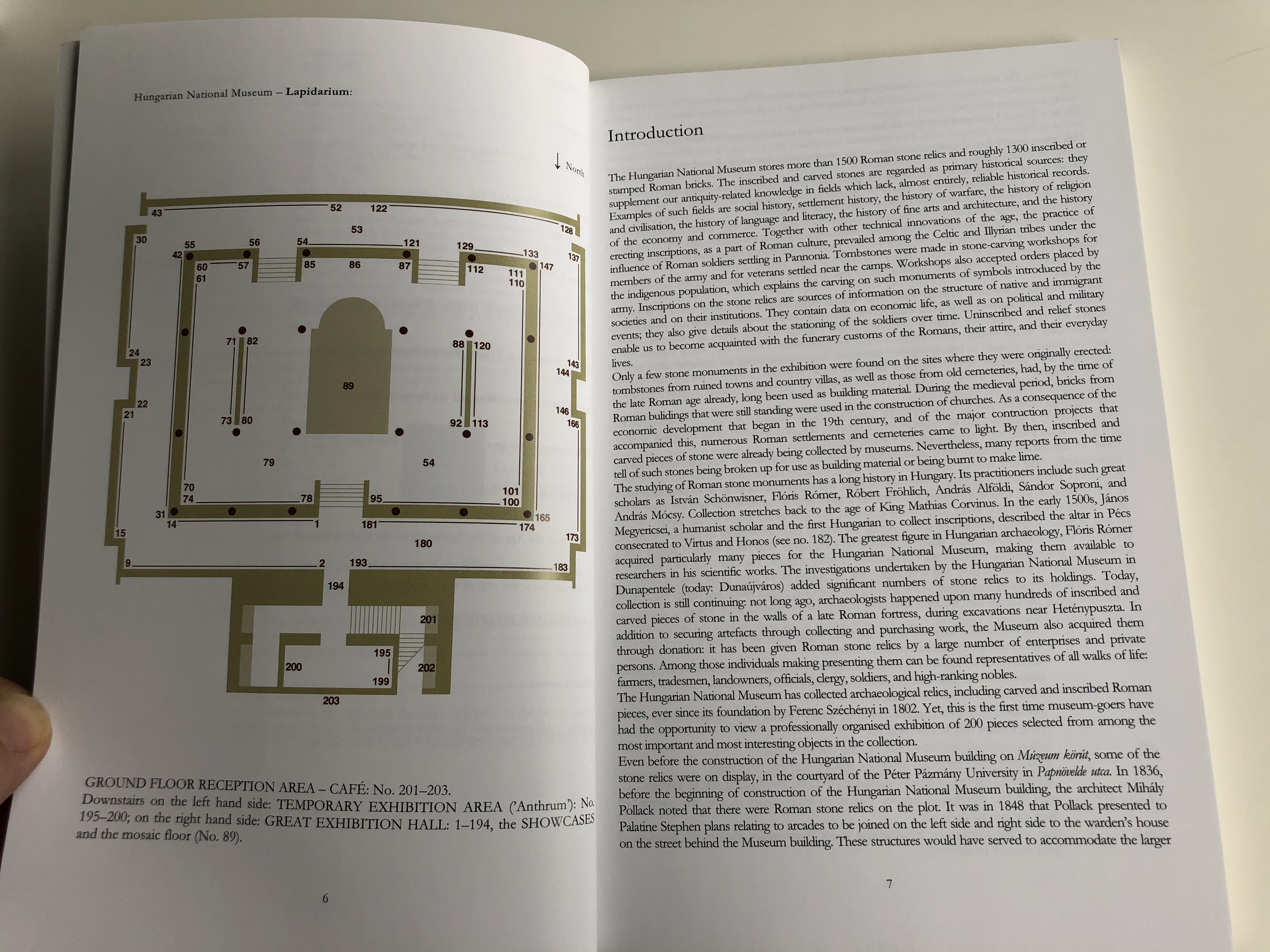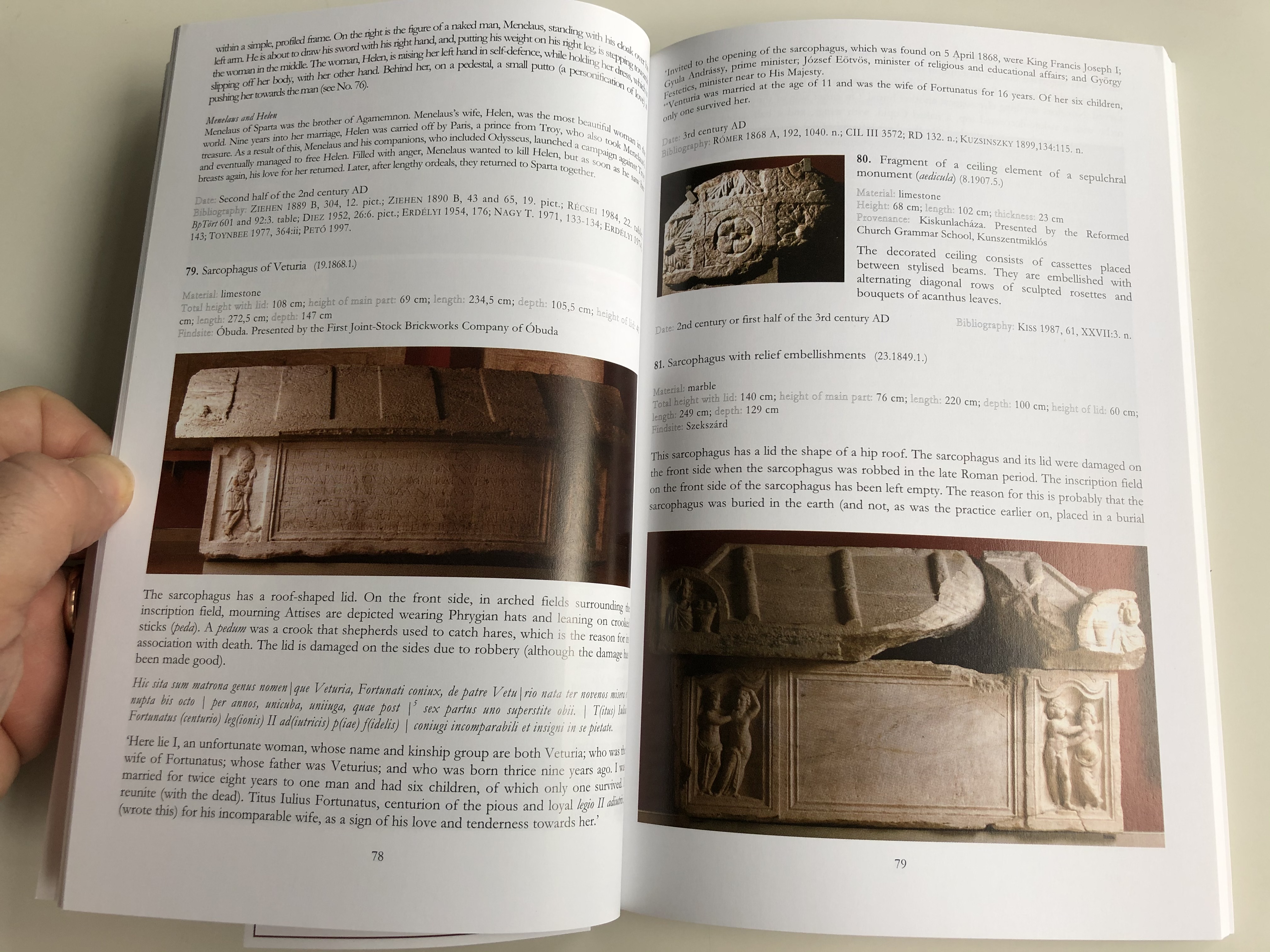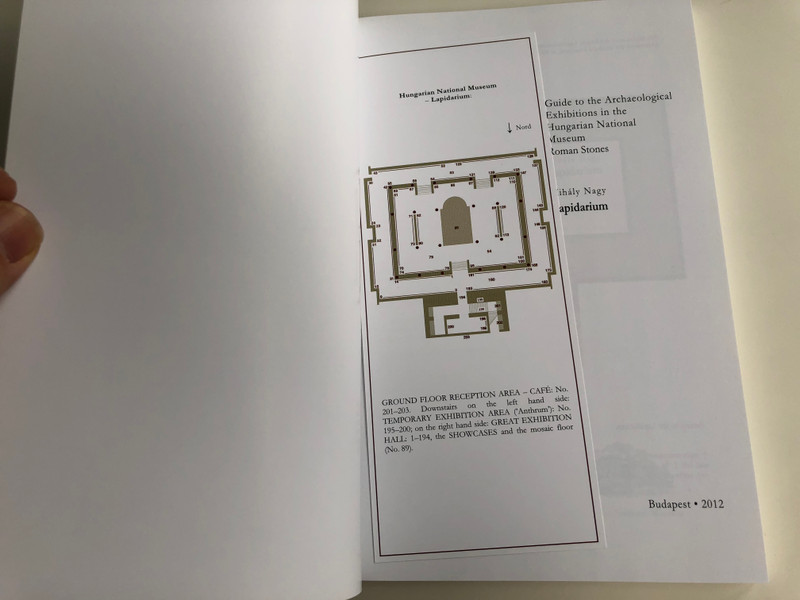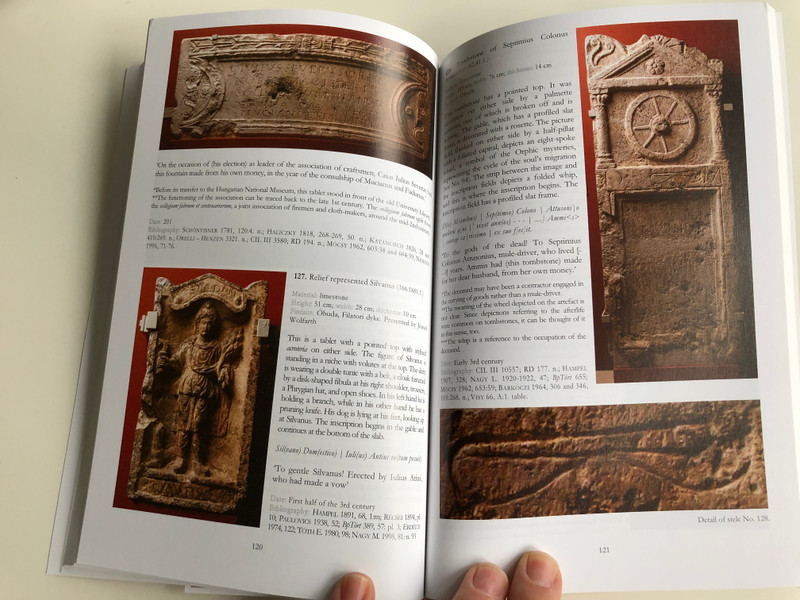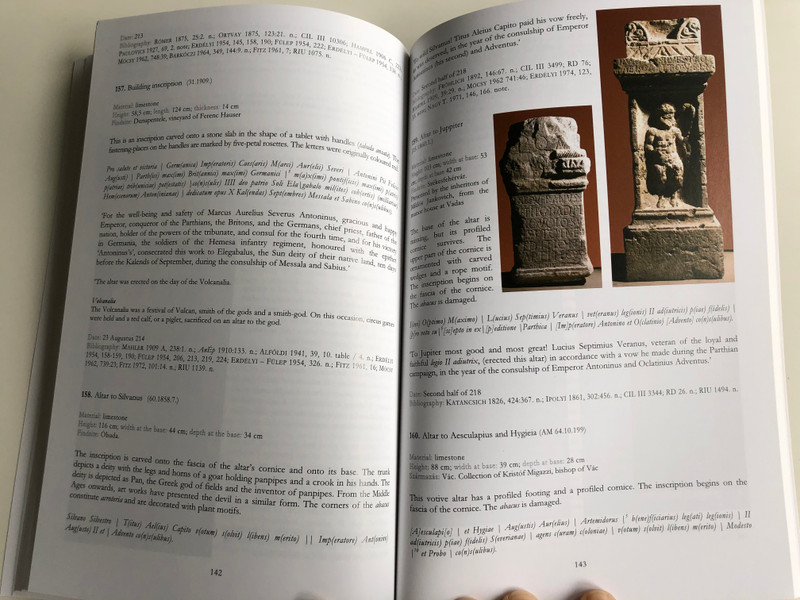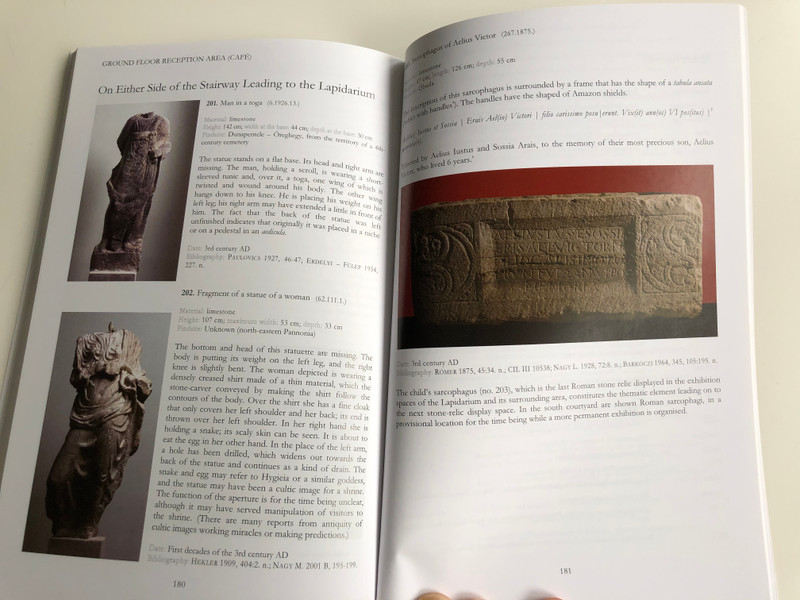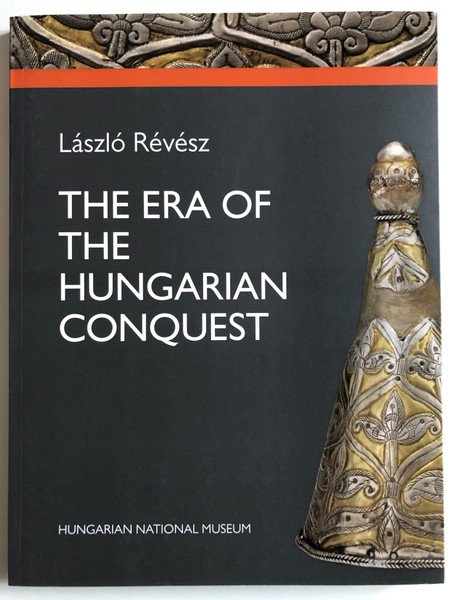Description
Roman Stones by Mihály Nagy - Lapidarium
Subtitle: Guide to the Archaeological Exhibitions in the Hungarian National Museum
Original Title: Nagy Mihály: Lapidárium - A Magyar Nemzeti Múzeum Római Kőtára
Product Details / Termékadatok
- Format / Formátum: Paperback
- Publication Year / Kiadás éve: 2012
- Pages / Oldalszám: 200
- ISBN: 9786155209024 / 978-6155209024
- ISBN-10: 6155209022
- Publisher / Kiadó: Magyar Nemzeti Múzeum
- Language / Nyelv: English (Angol)
Overview / Áttekintés
Roman Stones (Lapidarium) by Mihály Nagy serves as a captivating guide to the archaeological exhibitions of the Hungarian National Museum, focusing on the Roman-era stone collection. A lapidarium is a dedicated space for showcasing ancient stone monuments, fragments, and artifacts of historical significance.
Mihály Nagy bemutatja a Magyar Nemzeti Múzeum régészeti kiállításait, különös tekintettel a római kori kőtárra. A lapidárium olyan hely, ahol az ókori kőemlékeket, töredékeket és történeti jelentőségű tárgyakat mutatják be.
The guide explores a diverse range of exhibits, including:
Az útmutató bemutatja a kiállítás különböző elemeit, például:
- Stone Epigraphs: Inscriptions that reveal the lives and events of Roman times.
Kőbe vésett feliratok: Feliratok, amelyek a római kor mindennapjait és eseményeit mutatják be. - Sculptures: Intricate statues that reflect the artistry of the Roman Empire.
Szobrok: Az ókori Római Birodalom művészetét tükröző szobrok. - Architectural Elements: Columns, cornices, and other decorative fragments from Roman buildings.
Építészeti elemek: Oszlopok, párkányok és más dekoratív töredékek római épületekből. - Tombstones and Sarcophagi: Artifacts illustrating Roman funerary customs.
Sírkövek és szarkofágok: A római temetkezési szokásokat bemutató tárgyak.
This detailed and illustrated volume offers a fascinating look at Roman history and art, making it an essential resource for archaeology enthusiasts and scholars.
Ez a részletesen illusztrált kötet lenyűgöző betekintést nyújt a római történelembe és művészetbe, és nélkülözhetetlen forrást jelent a régészet iránt érdeklődőknek és a tudósoknak.
Product Features / Termékjellemzők
- Comprehensive Guide: Provides in-depth information about the museum’s Roman-era collection.
Átfogó útmutató: Részletes információkat nyújt a múzeum római kori gyűjteményéről. - Rich Illustrations: Features photographs and descriptions of the displayed artifacts.
Gazdag illusztrációk: Fotókat és leírásokat tartalmaz a kiállított tárgyakról. - Cultural Insights: Explains the historical and artistic significance of each exhibit.
Kulturális betekintés: Bemutatja az egyes kiállítási tárgyak történeti és művészeti jelentőségét. - Accessible Language: Written in English to cater to an international audience.
Hozzáférhető nyelvezet: Angol nyelven, hogy nemzetközi közönség számára is érthető legyen.
Interesting Facts / Érdekességek
- Lapidaria are often displayed in open-air courtyards, combining ancient stone artifacts with natural surroundings.
A lapidáriumokat gyakran szabadtéri udvarokban helyezik el, ahol az ókori kőtárgyak szépsége természetes környezetben látható. - Roman inscriptions provide valuable insights into the administrative and social life of ancient times.
A római feliratok értékes betekintést nyújtanak az ókori közigazgatási és társadalmi életbe. - The Hungarian National Museum’s collection includes unique Roman-era architectural fragments and sculptures.
A Magyar Nemzeti Múzeum gyűjteményében egyedülálló római kori építészeti töredékek és szobrok találhatók.
Publisher / Kiadó
Hungarian National Museum / Magyar Nemzeti Múzeum
Dedicated to preserving Hungary’s rich cultural heritage, the museum provides expertly curated exhibitions and resources for the public.
A Magyar Nemzeti Múzeum elkötelezett Magyarország gazdag kulturális örökségének megőrzése és bemutatása iránt, szakmailag összeállított kiállításokat és forrásokat kínál a nagyközönség számára.
Feedback / Visszajelzés
Have you visited the Hungarian National Museum's Lapidarium? Share your thoughts and inspire others to explore the wonders of Roman-era artifacts.
Járt már a Magyar Nemzeti Múzeum római kőtárában? Ossza meg véleményét, és ösztönözzön másokat a római kori emlékek felfedezésére!
Hashtags / Hashtagek
#RomanStones #Lapidarium #HungarianNationalMuseum #RomanArtifacts #ArchaeologicalExhibitions #MihályNagy #RomanHistory

